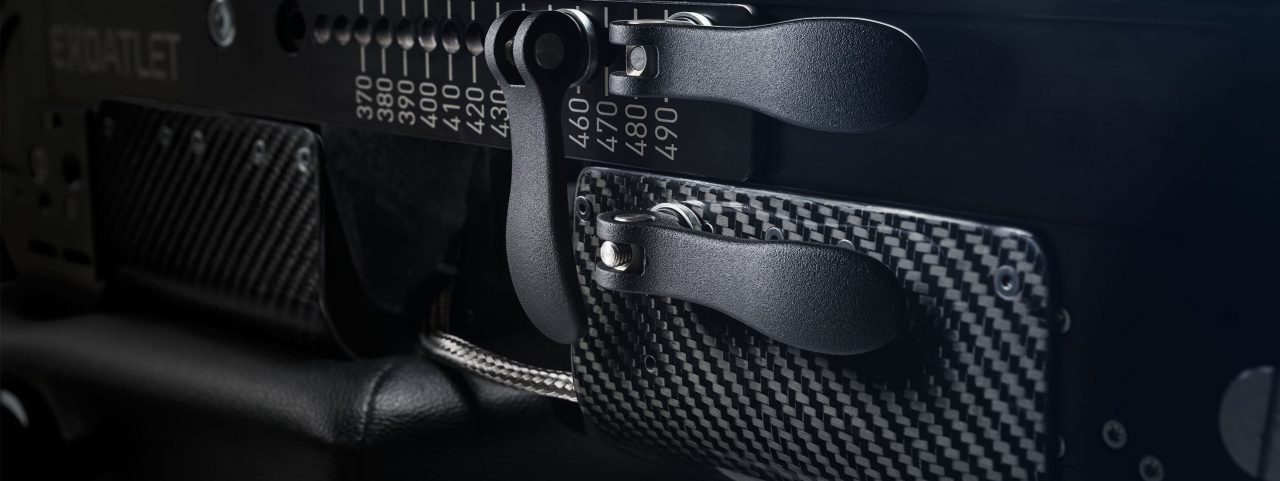
ExoAtlet’s Successful Journey To CE Marking
ExoAtlet specialises in the development of medical exoskeletons—wearable devices designed to help people with locomotor disabilities walk again. Since the company’s launch in 2015, over 6000 patients have benefited from rehabilitation treatment using an ExoAtlet exoskeleton.

After two years of complex product testing and in-depth audits, we have obtained CE marking for our exoskeletons, opening up the doors to the European market.
As part of the certification process, our exoskeleton was subject to a series of tests designed to confirm its load capacity, durability, and safety. It was overloaded, pinched with heavy steel fingers, dropped to the ground, and tested for fire resistance/magnetic integration. It wasn’t just the product, but also the manufacturing process that was subject to certification.
“When the patients walk in our exoskeletons, their leg muscles start working again. As a result, their overall physical health and blood circulation improves. They feel better mentally as well.” – explains Ekaterina Bereziy, founder and CEO at ExoAtlet.
Patients with motor disorders, neurological trauma, or muscle dysfunction use exoskeletons. The ExoAtlet exoskeleton can be adjusted to each patient’s proportions, to make sure it fits perfectly. Once the device is activated, it helps the patient to put one leg in front of the other and walk in a close-to-natural pattern. The support provided by the exoskeleton can be adjusted either by the patient or by a medical care practitioner. The further along the patient is in his or her recovery, the less force that needs to be applied. And gradually, the patient is able to walk again, without the help
of the exoskeleton.
Research conducted on ExoAtlet’s exoskeleton patients has shown that the length of rehabilitation process is greatly reduced compared to a more traditional treatment without exoskeletons. As CEO Ekaterina Bereziy explains: “If the lower limbs don’t move for an extended period of time, the brain stops considering these as parts of the body. The exoskeleton enables patients to move more, thereby enabling a quicker recovery.”
ExoAtlet is a truly international organisation; the company’s headquarters are located in Luxembourg,- Its manufacturing is done in South Korea, and the exoskeletons are being used in over 70 medical facilities across Europe, Kazakstan, Russia, South Korea, Turkey and the US. In each of these countries, ExoAtlet has successfully achieved the required product quality certifications.
Obtaining CE marking, indicating conformity with EU standards for health, safety, and environmental protection, was the most challenging certification process the company had to go through so far. But ExoAtlet rose to the challenge and the company’s adult size exoskeletons are now CE certified, and ready to be used in medical institutions across Europe, including Luxembourg.
“Achieving the CE marking certification was an extremely time-consuming and demanding process. But it was worth it. The CE marking didnot only grant us access to the European market, but also had a positive impact on our organisation as a whole. Over the past two years we have made important improvements to our products, innovation processes, and the way we work as a team. As a result, the quality and user-friendliness of our exoskeleton has increased throughout the CE marking process” – says CEO Ekaterina Bereziy.
As part of the certification process, the ExoAtlet exoskeleton was subject to a series of tests designed to confirm its load capacity, durability, and safety of the device. The exoskeleton was overloaded, pinched with heavy steel fingers, dropped to the ground, and tested for fire resistance/magnetic integration. Due to its complexity, the testing protocol had to be carried out by a special accredited laboratory in South Korea. And to the relief of the ExoAtlet development team, each test was successful.
In ExoAtlet’s case, it wasn’t just the product, but also the manufacturing process that was subject to certification. As mentioned earlier, ExoAtlet manufactures its exoskeletons in South Korea. This means that the representatives of the certification body had to travel all the way to Seoul to audit the manufacturer. Eventually the manufacturer was granted the ISO-13485 certificate, a huge milestone on ExoAtlet’s road to CE marking.
As CEO Bereziy admits, obtaining CE marking involved many unexpected challenges along the way. One of them was the requirement for the company to produce a complicated doll in order to carry out tests designed to test the maximum load capacity of the various functions. Creating this ‘test doll’ wasn’t as straight forward as it sounds because it had to be designed according to an extensive list of specifications.
But, surprisingly, the doll turned out to be very useful, and the company now runs its own tests with it. “We now use this doll to check things like maximum running time. It was a great idea, and something we hadn’t thought of previously.” – notes Mstislaw Rodygin, Head of ExoAtlet’s R&D team. This is but one example of how the quality
of ExeoAtlet’s development processes went a step further thanks to European certification.
Now that the CE marking has been obtained, what’s next for ExoAtlet? One of the priorities is to evaluate the user-friendliness of the upgraded ExoAtlet exoskeleton, based on feedback from patients and medical practitioners in Europe. “We are excited to start our full expansion in the European area. In the near future, tests will be carried
out in one of the leading German hospitals in the field of rehabilitation in Berlin. In parallel, negotiations are underway with clinics in the Benelux countries, France, Italy and Portugal.” – says CEO Ekaterina Bereziy.
Article published by: MERCUR corporate news of Chamber of Commerce, Luxembourg 2020, 5th October
